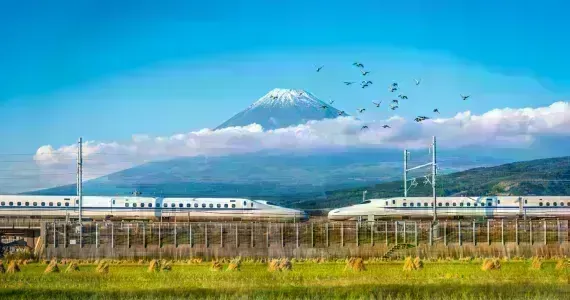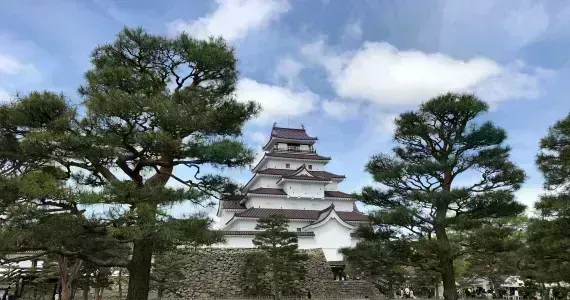Traditional Arts & Crafts of Tohoku

Traditional Tohoku crafts - Kokeshi dolls
Tohoku tourist office
Japanese ancestral traditions through craftsmanship
Located north of the main island of the Japanese archipelago, the northern part of Honshu known as Tohoku has its own cultural identity and traditions passed down from generations for years. Though it has its share of larger cities, such as Sendai and Aomori, Tohoku is often noted for its more rural geography and strong ties to tradition that often come with life in the countryside. This can be seen in its abundance of spectacular festivals, and especially in its array of traditional artisanal crafts that call this region home.
The Tohoku region is a vast region that includes six prefectures: Aomori, Akita, Fukushima, Iwate, Miyagi, and Yamagata. A trip to this little-visited part of the country offers the chance to see exceptional craftsmen at work, and to find a unique souvenir to bring back from Japan's "far north". Their remarkable works reflect the region's history and way of life.
The skills and knowledge of traditional craftsmanship are passed down from generation to generation and today's craftsmen have received their knowledge from the masters of yesteryear. Many artisans in Tohoku open their workshops to the public, which makes it easier to discover local crafts. It's common not to have to make an appointment, but remember to call ahead (or have your hotel call) to confirm opening hours.
Kokeshi dolls
The famous Kokeshi dolls originate from Miyagi Prefecture. They were made in the late Edo period (1603-1868) as toys for children in hot springs. Since Tohoku has many natural hot springs and Onsen, these little dolls quickly spread throughout the region.
These wooden dolls without arms or legs have an enlarged round head and are usually painted red, black, and yellow. Don't be fooled by their simplistic appearance as there are 11 different kinds of kokeshi dolls in the Tohoku region, nearly half of which originate from Miyagi Prefecture.
To discover these traditional dolls, go to one of the spas in the region such as Naruko Onsen, which also has a museum dedicated to kokeshi. It is about 45 min from Furukawa Station, which connects to the Tohoku Shinkansen. Little more, you can go to Naruko Onsen using the Japan Rail Pass!
Aside from Miyagi's Naruko Onsen, other parts of Tohoku are well-noted for the kokeshi doll craft, many of which have distinct patterns that are unique to their area of origin.
Tsuchiyu Onsen in Fukushima is noted for its kokeshi dolls with colorful striped patterns. Ones in Aomori are often distinguished with floral and other nature-inspired designs. If possible, be sure to take the time to enter kokeshi specialty shops to see the works of different artisans, each of their dolls and the interior of their shops teeming with stories throughout the years.
- Read also: Japanese dolls
Tsugaru Kogin-zashi embroideries
One of the specialties of Aomori prefecture, the northernmost point of the Tohoku region, is traditional embroidery from the Tsugaru region. One of the characteristics of Kogin-zashi is that it is made up of geometric patterns called "modoko", giving it an intricate and contemporary look.
The history of Tsugaru Kogin-zashi dates back over 300 years. It was a sewing technique used to repair the clothes of the peasants of the region.
Aomori's northern location (being right below Hokkaido), sees snowy and cold winters, and during the Edo period, the farmers there wore almost all hemp clothes, a fabric that was not warm enough and not suitable for the harsh winters of Tsugaru. Embroidery was then incorporated into the clothes via the kogin-zashi technique to add an extra layer for durability and warmth.
This technique was largely developed in Hirosaki within Aomori Prefecture, and it's here that the Kogin Institute can be found. At this facility, history on the traditional craft can be seen and it simultaneously functions as a factory producing these kind of goods. Visitors can purchase Kogin-zashi embroidered goods such as book covers, coasters, handbags, and even business card holders here, serving as a great souvenir to bring home as well as a way to support the craftsman who maintain this traditional craft.
Nanbu Tekki ironwork
High-quality iron utensils have been made in Iwate Prefecture, and specifically in Morioka City, since the 1600s under the name Manbu Tekki. The region was, at that time, under the influence of the Nambu clan and the name has remained up to today.
The region's ironwork workshops are renowned for their kitchen utensils and other everyday household objects, but above all else, as iron teapots, popular all over the world and a flagship object of this art.
These teapots are carefully cast and lacquered and what makes them special is that their interiors are burnt over a charcoal fire for about an hour to prevent rust and ensure a long life. They are distinguished with their deep, rustic color and a detailed design often consisting of numerous, small, elevated dots that line the circumference of the pot known as arare, however, each craftsman is free to create the pattern that suits them best on the outside of the teapots, you will find different types depending on the workshop.
These Nambu Tekki iron pots will often be found being used in traditional tea ceremonies and at traditional tea houses throughout Japan.
Iwate Prefecture is notable for its abundance of natural iron deposits and resources that allowed the craft to initially proliferate, and to this day it is highly-sought for by collectors and practicers of Japanese traditional crafts. The pots themselves are created through a multi-step process that involves molding, finishing, and polishing that eventually result in a strong, utilitarian, rust-resistant pot that as equally beautiful to look at as it is dependable to use.
Aizu Erosoku candles
These candles are made, colored, and painted by hand. They originated in the city of Aizu in Fukushima Prefecture and their origin dates back more than 500 years.
These candles are meticulously designed one by one by a craftsman. To create them, the wicks are hand-rolled and dipped in a special wax derived from lacquer trees dozens of times, giving them delicate “growth rings,” similar to those found in trees. They are then painted by hand and decorated mainly with floral motifs, such as plum blossoms and peonies. These artisanal candles are often used as decoration during traditional weddings or at Buddhist temples.
The beauty of these candles can be fully appreciated via the Aizu Erosoku Festial that takes place on the grounds of Tsuragajo Castle. The area around the castle and castle park are adorned with many of these candles that illuminate the night during winter. They are often placed directly on the snow, creating a beautiful medley of glowing light that is juxtaposed to stark white. There are a number of locations throughout the prefecture that these candles can be seen as well, such as Higashiyama Onsen and Nanukamachi dori by Amidaji Temple.
Also in Aizuwakamatsu, visitors can personally try their hand at creating these candles at the Ozawa Candle Shop.
- Read also : The Aizu Samurai Residence
Kawatsura Lacquer
Lacquerware has a long and storied history in Japan, and maintains a staple of the nation's artisanal history up to this day, with a medley of collectors and high-end restaurants serving their own culinary art atop high-quality Japanese-made lacquer plates and trays.
For Kawatsura Lacquer, the technique was first introduced in Yuzawa City, Akita Prefecture. With nearly 800 years of history, Kawatsura Lacquer is highly regarded for its durability and ornate, vibrant designs.The essential part of this technique is the undercoat, consisting of a mixture of persimmon juice and charcoal powder, applied and polished after drying.
This undercoating procedure is repeated 5-6 times until the wood is very smooth and strong that simultaneously creates a vibrant and deep coloration. Oftentimes, an additional step, called chinkin, is undergone that involves adding gold leaf and flakes to the design to elevate it even further.
Like many other Japanese crafts, there is a concept of patina that comes from continued use over the years that creates a unique sense of character for each piece. For Kawatsura Lacquer, this principal is especially notable, as antique pieces have their share of wear and tear that actually add to the aesthetic more than detract.
These high-quality lacquer items are designed for use in our daily lives: bowls, trays, plates, cups, bento boxes, etc.
- Read also: Urushi, Japanese lacquer

















